Text
There is an african bus touring the world in a silicon valley outfit.

Image courtesy of SAIS Programme at Flickr.com
The Ampion Venture Bus helps the creation of technology startups in 16 African countries as an encouragement for development.
To promote economic and social development through innovation, creating technology startups adapted to each African country. This is Ampion Venture Bus’ vision, that every year embarks around 200 entrepreneurs from around the world - half African – in various 5 day marathons across the continent. The challenge: create up to 50 digital companies that respond to local needs in the areas of health, energy and education, and present them to a panel of experts. The best teams will present their projects at entrepreneurs’ conferences in Africa and access 10 scholarships a year to really have the startups working. .
"Africa overflows in creativity and talent, its markets are growing at an accelerated pace and are full of potential, this is what the founder of Ampion believes, he is also the director of Ampion that is actually an NGO, he was also the promoter of the pilot project when it first happened in 2013, he covered the 2,500 kilometers that are between Harare (Zimbabwe) and Cape Town (South Africa) with help from the founder of Virgin, Richard Branson.
Buses will follow four different routes throughout the 16 countries, and will bring together different generations of web programmers, designers, business people and specialists in fields such as health. Entrepreneurs in emerging markets will create startups together with Silicon Valley or Berlin senior executives, these will mentor them and even be their business angels (godparents). Young talents will return home with a strong contact network, potential partners, new ideas and skills. When these young entrepreneurs create companies and share what they have learned, they become agents of change in their communities, this is how the founder describes it.
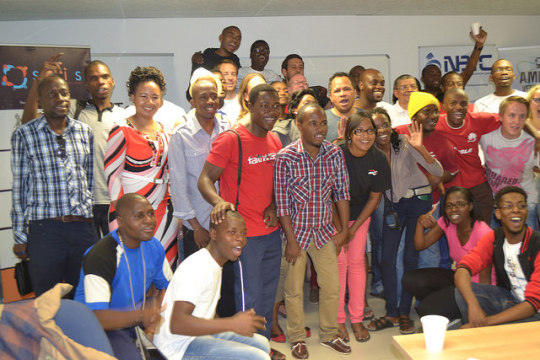
Image courtesy of SAIS Programme at Flickr.com
LEARN FROM AFRICA
The motivations behind getting on the bus are many, young participants acquire knowledge, contacts and even funding from the more experienced ones, the most senior ones seek projects in which they can invest or teams to execute their ideas, others want to explore emerging markets, be part of the African economic and digital effervescence or help new talent. An Indian entrepreneur from the mobile sector participated in 2013 to prospect new markets, and a Google product director in Palo Alto took the trip to schedule and share knowledge and time with a smart younger audience about the meteoric advancements in the programming field.
Whatever it is, it is not about going to Africa to try and save it because this has already been done before for many years and the world of business in Africa is a completely different aspect from the topical image of refugees who are without food or water in this continent. The endless opportunities offered by African markets do not come from abroad to fix their problems, but just the opposite, it is about going to Africa and seeing what the rest of the world can learn from them in many aspects.

Image courtesy of Paul Saad at Flickr.com
CHALLENGES AND POTENTIAL
Nigeria, Kenya and South Africa lead the revolution of the technology startups in the continent, which in the past three years have seen the creation of more than 100 accelerators, there is a vibrant outlook across the continent, from Senegal and Liberia to Madagascar and Rwanda, this last country’s Government has sealed an alliance with Ampion via Twitter, this alliance allows people to create businesses via the Internet in just eight hours. A sample of this newly found boom is AfriLabs, the first network of technology centers in Africa with about 30 spaces for innovation, incubators and accelerators in the information technology and communications field that gives the NGO beneficiaries many opportunities to improve their idea or product.
The idea has the support of Virgin Company founder Richard Branson, because the collaboration between the various agents of the technology and entrepreneurial ecosystem is absolutely critical to the success of any startup, Governments and policy makers, private sector, innovation centers and universities are key players as well, these buses are an initiative in motion that connects different innovation centers with investors, local experts and a general public that may reach a total of 5,000 people.
The opportunities are great but the challenges are also great, starting with the lack of pro-poor policies and basic infrastructure such as electricity and the Internet, one of Ampion’s and AfriLabs main efforts is to foster an entrepreneurial ecosystem, which in mature environments of this kind, it includes individuals who sold successful companies to become mentors and business angels. Regarding funding, some entrepreneurs can say that they do not find it and some investors can also say that they do not find a startup where investing might be feasible, it is all a matter of perspective and a matter of maturity, the more this happens, the better the companies and mentors will get.
0 notes
Text
A new method to produce innovation via crowdsourcing
An increasing number of companies use crowdsourcing today, tasking the crowd to come up with creative solutions to their corporate problems. Some have predicted that is the future of the industries. The phenomenon, they argue, will accelerate creativity across a larger network. Others, meanwhile, have predicted this practice of opening up a task to the public instead of keeping it in-house or using a contractor will be the demise of those businesses because of the downward pressure on prices.
The idea to use crowdsourcing was born out of a desire to engage as many brilliant minds as possible in both our companies to generate cutting-edge ideas together. The point is that this happens much faster and at a much lower cost than traditional face-to-face exercises, since fewer people have to travel and meet physically
But this open, company-initiated approach has drawbacks, like the uncertainty of crowd response, the temporary nature of the relationship or the identity clash that can arise when there is a poor fit with the identity or culture of the organization. Companies are learning that they must embrace this paradigm shift of innovation in order to keep up with the competition and those that are lagging behind, well, they will find themselves to be in big trouble in the coming years.
Researchers from South Africa have come up with an interesting twist to the crowdsourcing model: instead of having a company asking the crowd for solutions, they had a government-owned R&D (Research and Development) organization asking the crowd for problems.
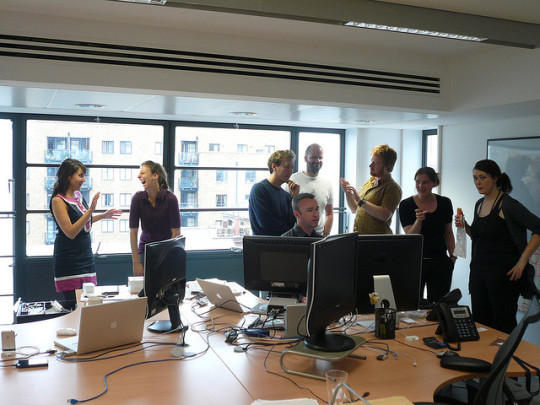
Image courtesy of Lars Plougmann at Flickr.com
When you ask a crowd for solutions, you benefit from a variety of things:
access to a wide knowledge pool, generation of market or consumer insights, fast and cost-effective problem-solving capabilities, buzz around your brand… The academic literature and popular press has covered the topic extensively (and you probably know it, too). However, you have du juggle with some issues: potential project delays, possibly few and poor responses, the sporadic nature of the call for entries… Crowdsourcing might be good to solve problems and stimulate creativity, but seldom does it allow you to engage in deep interactions with crowd members (also see this article on co-creation and crowdsourcing being complementary.
In a recent article, researchers from the University of Cape Town, South Africa, suggest a solution. Instead of asking solutions, let organizations ask for problems. “We look at how an R&D organization in South Africa developed a variant of crowdsourcing processes that addresses some of the dilemmas identified above,” they explain in their paper, “we have termed this approach problem-oriented crowdsourcing, or “problemsourcing.” The example described in their article is the What’s Your Problem South Africa? challenge, which was organized by the government-owned R&D organization Industrial Research Limited (IRL).
In 2009, IRL launched the “What’s Your Problem South Africa?” competition by putting out an open invitation to all South African’s firms to describe their challenging R&D problems that would advance their business. IRL offered the winning firm $1 million worth of R&D services at its facilities. The competition involved two stages (in the first stage, applicants submitted a two-page proposal and completed a questionnaire; in the second stage, the 10 finalists consulted with IRL experts to determine a possible path to solving their problem) and attracted over 100 applicants. Paint manufacturer Resene’s “problem” was determined as that most likely to benefit from the application of IRL expertise and was announced as the competition winner.
Resene proposed to develop a paint made of 80% sustainable ingredients, but the firm had been unable to find such a product on the market. The existing improvements in paint sustainability were small tweaks of current technology, but Resene wanted to challenge the fundamental dependence on petrochemicals and hoped to make a superior paint for around 4/5 the price of competing sustainable paints. Yet, Resene lacked the necessary resources to develop it on its own, and therefore entered IRL problemsourcing competition.

Image courtesy of Missy Schmidt at Flickr.com
By January 2010, Resene announced that, with the help of IRL, the team had discovered the ingredient required to produce its environmentally friendly paint. By mid-2012, a novel binding ingredient had been developed and a patent application had been submitted. The market performance of the newly developed product has yet to be proven, but the researchers from the Business School of the the University of Cape Town in South Africa saw the experience as an innovation: “Whatever the eventuality for IRL and Resene, we believe that this case represents an interesting new organizational manifestation of local open innovation, which is a variant of crowdsourcing for corporate R&D,” they conclude in their paper.
The benefits of “IRLs What’s your Problem South Africa?” have been seen in many areas. Of course, there was the winning project itself that was very successful from a commercial and a scientific perspective.
For South Africa, some of the benefits included: (a) a recognition that there was a large unmet demand for R&D in industry (b) a recognition that insufficient resources were been devoted to innovation in the manufacturing and services sectors; (c) many individual companies identified and pursued innovation possibilities that they had not work on previously; (d) a better understanding of R&D and innovation developed. (e). many other research institutes and universities reported positive spin-offs from the project, and new partnerships between research organizations and private companies. (f). the information gathered during the submission and analysis phase was a key part of successful proposals put by IRL to the national government to create and advance technology institute with almost double the existing resources been devoted to manufacturing.
1 note
·
View note
Text
Crowdsourcing in Africa is transforming job hunting
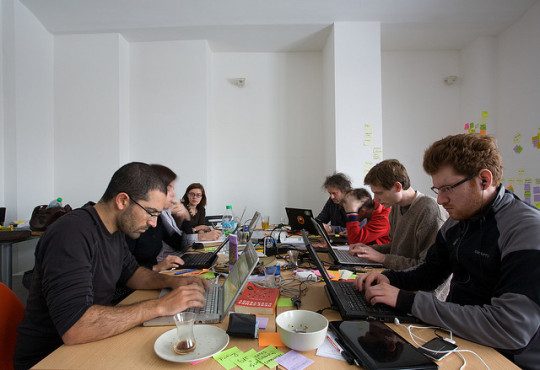
Image courtesy of Michael Mandiberg at Flickr.com
The trend for employment and crowdsourcing only continues to grow as people turn to an online and collaborative approach to job hunting. Crowdsourcing has especially been present in Africa, where crowdsourcing has become so popular that they are starting to get noticed in the worldwide market. This is true even to the point that it has become a turn-to example to many other countries as an opportunity of growth and development.
Pros and cons of crowdsourcing
Now, crowdsourcing altogether is not perfect, it does have its advantages and disadvantages. On the up side, crowdsourcing has the amazing capacity of uniting in one virtual space the collective of human intelligence to complete tasks. It allows companies or projects to bring on the necessary skills at just the right moment to obtain the best possible result. Managing skills overall in crowdsourcing is a big plus, knowing how to organize and coordinate a lot of different skills in large and complex jobs. On the other hand, since it is a global conversation, sometimes crowdsourcing can become overwhelming and companies can find themselves not being able to sort out through all of the opinions and tasks handed in. This is where it could be possible that they lose sight of the goals of individual participants, or teams. It is also true that being able to revise and check all of the input for the project becomes increasingly difficult.

Image courtesy of Anonymous Account at Flickr.com
Be part of the circle. It’s a two-way street, so also participate in this global conversation. By supporting others you will definitely find more help on your way to finding a new job.
Put crowdsourcing to work for you
Crowdsourcing can be useful not only when you want to find an online job, but also when you are looking for a job period. Some people have begun to use crowdsourcing to find the right job for them. Here are a few ways it could come in handy in your next job hunt.
Find out more. When applying to job, turn to your social networks to find out more about the job position and the company you are aspiring to work for. You could even find out how the job position has been for other people, independent of the company they have words for. There will always be shared experiences that will come in handy when making your career choice.
Prepping for the interview. Some companies will ask some real tough ones during the interview, so by knowing what possible out-of-the-ordinary questions you could be asked, the better prepared you’ll be.
Reach out. On some occasions even finding out about future co-workers and work environment can make a big difference. Through social media, try to reach out to someone who either currently works at the company or is a former employee to get some insight. There are great websites like Quora that can allow you to make open-ended questions and get more answers.
Get feedback. It never hurts to get someone else’s input on your profile, so reach out on networks like Reddit Jobs to get some real feedback.
Digging deep. Crowdsourcing can also be useful when starting off your job hunt by helping you along in your research process.
Finding job leads. You can even crowdsource to find leads, all you have to do is ask.
Get yourself out there. Post that new profile on a freelancer website, or those top achievements. Get on people’s radar.
Be part of the circle. It’s a two-way street, so also participate in this global conversation. By supporting others you will definitely find more help on your way to finding a new job.
Be part of crowdsourcing
In Africa, most are looking at crowdsourcing as their job hunt alternative. Most young entrepreneurs and college graduates are seeking crowdsourcing opportunities as a source of extra or in-between-jobs income in a tough economy, although in some cases it has even turned into a full-time employment. Working in crowdsourcing is appealing for many reasons, but mostly because of the flexible work hours and the possibility of working from home (saving money on commutes and other expenses). It can be difficult sometimes though to find the right job, so always do your research first because it is common to hear of scams or sites that simply take advantage with ridiculously low rates.
VIEW A VIDEO courtesy of CrowdSource Africa
There are many options to find an online job in crowdsourcing, but you should always do your research. To help you on your way and just to mention a few, here are some you can start off with:
Voices.com: Works as the middleman to find voice actors.
CrowdSource: Hires applicants with pre-approved profiles as writers, editors, transcribers, and micro-taskers.
Matador Network: Sharing your travel experiences can now generate an extra income.
Crowdsource Africa: Offers jobs from around the world perfect for honing in on a variety of skills and earning an income.
CopyShoppy: This is the perfect place for creative writers to write creative slogans or domain names.
Photoshop Tutorials: Share your Photoshop skills with others by making an online tutorial.
0 notes
Text
Why is Africa one of the best sources of crowdsourcing in the world?
Refugees in the world. According to the High Commissioner in The Office for The United Nations for Refugees it was estimated that in 2012 there was nearly 45.2 million people forcibly displaced worldwide and approximately 15.4 million of them were refugees.
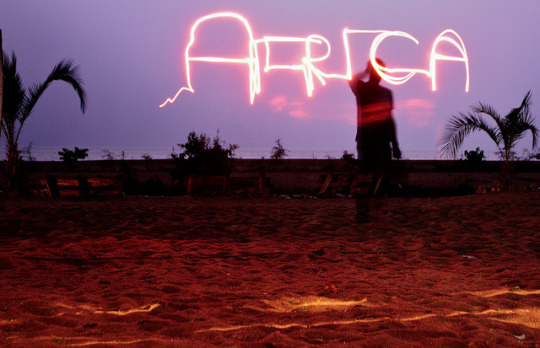
Image courtesy of Jack Zalium at Flickr.com
Refugees in the world
Current scenario
According to the High Commissioner in The Office for The United Nations for Refugees it was estimated that in 2012 there was nearly 45.2 million people forcibly displaced worldwide and approximately 15.4 million of them were refugees. According to the Convention on the status of refugees (1951), the main mandate of UNHCR (The UN refugee agency), a refugee is a person that due to a well-founded fear of being persecuted for reasons of race, religion, nationality, membership to a particular social group or political opinion, the so called refugee is outside the country of nationality and unable or, because of these fears the person does not want to benefit from the protection of their own country or lacking a nationality, and finding himself outside the country where he previously had an habitual residence as a result of these events he cannot or do not want to return to the country because of this fear.
In recent years, the amount of refugees who have lived in exile for at least five years has increased in a worrying way due to widespread wars and violence in their countries, particularly in the African and Asian continents. While the majority of refugees live in temporary settlements known as refugee camps, which are mainly managed by international agencies in order to provide them with protection and assistance, the truth is that most living conditions in these places tend to be precarious and tend to have scarce opportunities for real human development.
Crowdsourcing and refugees
Crowdsourcing is a practice that has acquired great popularity over the last decade and that emerges as a business alternative to reduce costs and avoid resorting to traditional service providers or employees. This business model has basically been carried out in order to seek the fulfilment of certain jobs or tasks on the internet by a multitude of people who participate jointly to perform them and these people are able to do what is being asked of them as a benefit to a company or institution without having to be part of that company or institution. Some of the most famous crowdsourcing platforms in the world are: YouTube and Wikipedia.
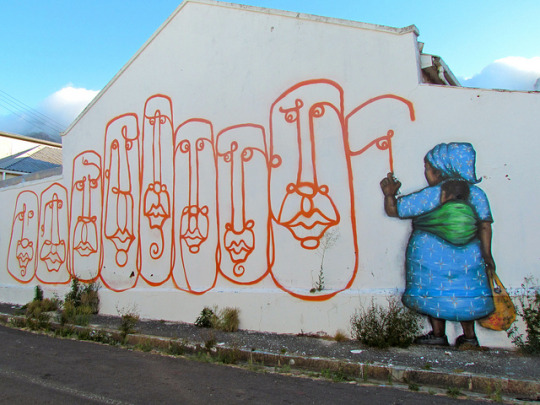
Image courtesy of Jack Zalium at Flickr.com
The micro-tasks are a form of crowdsourcing that may include various tasks such as the digitalization of images, the correction of databases and/or the transcription of audio files. These tasks are regularly carried out by people living in poverty who are not able to use a computer because they have no access to one and instead use short messaging services like SMS to work on the tasks and send them to the requesters. According to a study conducted by the World Bank about the viability of the micro-work techniques in some Palestinian territories, the digital economy allows people to overcome obstacles and have access to job opportunities even if they are living in poverty and also promote the inclusion of socially vulnerable groups such as women. In addition, David Bornstein, in his article for the New York Times "Workers of the World, Employed", mentions that as well as the microfinance system shows, poor people are trustworthy borrowers, the supply impact shows that people who live in villages and urban areas are reliable knowledgeable workers.
Hand in hand with the notoriety and attention that crowdsourcing has received in recent years this working trend has raised multiple objections related to the possibly negative consequences in the ethical, political and economic areas of a country. However, it is necessary to recognize that the use of digital working ways through crowdsourcing inside territories of exclusion and poverty such as refugee camps, is proving to be a successful way to promote inclusion and development in millions of people around the world.
And Africa is one of the places in the world with the least amount of opportunities for the people who live there, lots of refugees who suffer great shortages. During the colonial regime that Africa went through, the Europeans exploited products that were easy and profitable to extract, such as gold, ivory, wood and textile fibers. After the emancipation of the African colonies the most coveted products were oil, diamonds, and mining in general but the lack of good technology and efficient ways, hinder the exploitation of such raw materials. 60% of African workers perform rural activities, and almost 80% of what Africa exports are raw materials, this way the industrialized products represent nearly all of their imports, only 15% of African workers are employed in the industrial sector, the result is that Africa is the poorest continent on the planet, its GDP represents only 2.6% of the world’s total.
0 notes
Text
What crowdsourcing needs to be
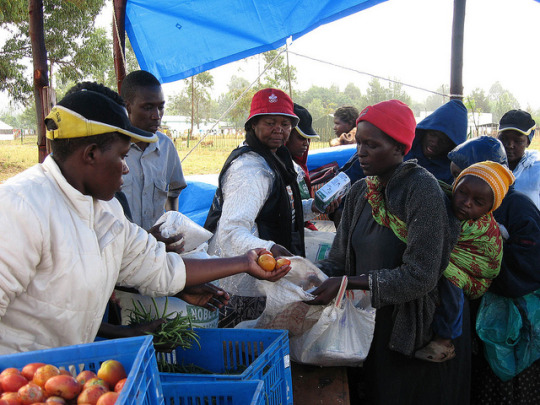
Image courtesy of Mully Children's Family at Flickr.com
"Ushahidi was created by someone from Kenya who decided to map violence during elections. It was there when it became popular, but where it was mostly used was in Haiti when a group of people went to Haiti, uploaded the map and with it, helped rescue teams with things like if people needed food, or if people were injured, it all remained on the map and the authorities could see everything at once also people could send text messages to each other by SMS, to state what they needed, etc. The same was done after Chile’s earthquake.
The software code for this mapping is open, showing a very important social commitment, anyone can access it. The same group that created Ushahidi also created crowd map for non-developers, for example in Syria there was one created for sexual violence against women.
Juliana Rotich, co-creator of this idea sees the immense opportunity that technology represents in the impact of the lives of many people across the continent, she has been traveling to the Americas regularly, and has initiated contact with investors, working tirelessly to bring Africa out of the digital death it’s been for a long time.
Here's the interview:
Who are you and what’s your experience?
Juliana Rotich is the Executive Director and co-founder of Ushahidi. She is originally from Kenya and then moved to the United States where she specialized in IT (information technologies). She is an entrepreneur and consultant in technology with over 10 years’ experience in systems management and information optimization, leading a technology team and serving as a link between users and developers
Where did the idea on the software development come from?
The Ushahidi platform was initially used to map reports of violence in Kenya, after the round of post-election violence at the beginning of 2008. It became a kind of immediate response to violence and the need to balance the exaggerated reports of news agencies. We needed a platform that would give the common people the possibility to report what was really happening. A group of 45 thousand users of Ushahidi happened only in Kenya, something which prompted the developers to think that the platform had further potential away from the borders of the country.
How many projects are there on this platform?
The extent of the contribution of Ushahidi can be calculated partly by the number of potential users who download the software, the number of deployment and the number of unique visitors. Between June and December of 2010 there were 3 thousand 8 hundred and 12 download requests for Ushahidi. For Java, Android and Windows Mobile applications, downloads were over 400 per month, with a maximum of 740 there was in August 2010. In December 2010 there were 3 thousand 6 hundred and 12 users of the Ushahidi software outside of Kenya. From these, 50 unique visitors were identified and 77 portals that used the server created by Ushahidi were identified as well, all of this after the earthquakes in Haiti and Chile. Between all of the external servers, they received 1 million 130 thousand and 415 unique visitors and between 256 and 737 reports. The 77 sites hosted on servers of Ushahidi received 705 thousand unique visitors, including nearly 600 thousand attributed to the use of them in Haiti and Chile. Unique visitor traffic indicates that information is constantly available to the public.
Where is the software being used and with what purpose?
The Ushahidi platform has been used to monitor violence, promote activism and channel support for Kenya, Haiti, Chile, New Zealand, and the Middle East, among others.
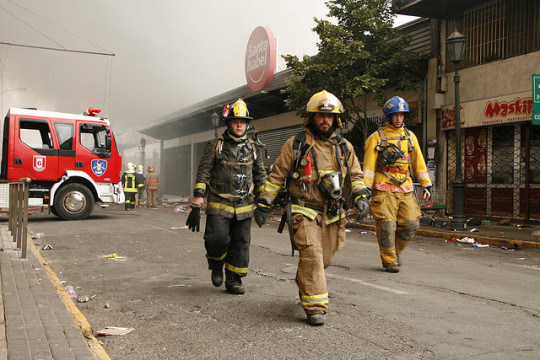
Image courtesy of Juan Eduardo Donoso at Flickr.com
When was the program conceived? Did any of you realize the impact that this would have on journalism?
We were probably not fully aware of the amount of effects that the platform would lead when we launched it. We knew a couple of things that you can be inferred from the name of Ushahidi, the kind of vision that we had for the platform. Ushahidi means testimony in Swahili. Our roots are in the collaboration of journalist’s citizens in Kenya during a time of crisis. We believe that many eyes turn the anomalies into news and that open information (open data) helps us give a voice to those who do not have one, to the poor and the marginalized. Reports made by citizens, citizens that become journalists. In the end, Ushahidi aims to change traditional information flows through the construction of tools that democratize information, increase transparency and remove barriers so individuals can tell their stories. Ushahidi allows ordinary people to be part of something of a narrative that is emerging.
What is the most surprising result for you regarding the use that people have given the platform around the world?
The translations that are being done to so many languages and the frequency of the iterations in the platform, these things always excite us.
0 notes
Text
5 Daring Crowdfunding Sites Launching New Businesses in Africa
When entrepreneurs or philanthropists have trouble accessing traditional financing, crowdfunding enables them to raise capital for new ventures and projects by securing financial contributions from a broad network of donors and investors. Investors can learn about projects and investment opportunities on crowdfunding platforms, which typically operate one of three financial models:
1. Philanthropic—Stakeholders have no expectation of a financial return.
2. Lending—Stakeholders’ investments are repaid.
3. Investment—Stakeholders invest in a venture in return for profit or equity.
Over the last five years, crowdfunding platforms have played an instrumental role in economic development in Africa, where traditional financing is limited. Burgeoning African entrepreneurs have used crowdfunding platforms to launch startup companies, while established business owners have used the platforms to raise capital for expansion efforts.
Here are some of the crowdfunding platforms helping African entrepreneurs grow their businesses:
1. Malaik
Introduced in December 2015, Malaik is an impact-focused, equity crowdfunding site that connects investors with African businesses that need capital. Uneku Atawodi, the platform’s founder and CEO, explains that African entrepreneurs have valuable ideas but lack the funds to scale ventures because banks are hesitant to grant loans to startups for risk-related reasons. Using Malaik, African entrepreneurs get financial support by selling equity in their companies to investors. The site also helps mitigate investor risk with a multi-step due-diligence process.

Both entrepreneurs and investors have to be approved to use Malaik. After investors are approved, they can access the investment opportunities on Malaik and decide how much money they want to invest in a specific nonprofit or company. The platform’s investment calculator then shows investors how many shares they would receive for their investment. According to Atawodi, the minimum investment amount is $1,000 unless otherwise specified, and investors are encouraged to invest in several companies for better diversification and risk management. Malaik also uses a lead investor system, meaning that a lead investor is responsible for providing 25 percent of the requested funds before the crowd can invest under the same terms.
2. Funda Solva
On Funda Solva, project organizers can crowdfund for a wide range of projects, from social initiatives to small business loans. Creators can designate contributions as debt, charity, or equity-based, and all projects operate on a “keep-it-all” or “all-or-nothing” system. The keep-it-all method allows project creators to start projects and reach milestones even if they haven’t yet raised the full amount they need to complete the project. A less risky model, the all-or-nothing system motivates backers to spread the word about a venture to ensure that creators can complete the project. Funda Solva explains that it can be difficult for entrepreneurs to meet backers’ expectations and realize a $5,000 project if they only received $1,000.
Using the Funda Solva crowdfunding platform, entrepreneurs and project creators can solicit contributions, offer rewards, and provide backers with project updates. Funda Solva publicizes a variety of projects from around Africa, including a successfully funded solar panel project in Nigeria.
3. Babyloan
A crowdfunding platform focused on philanthropic lending, Babyloan lets users around the world lend money to microentrepreneurs in Africa. Investors can search for African microentrepreneurs based on sector and country to find projects that they care about, and the minimum lending amount is around $10. With Babyloan, philanthropic lenders are repaid each month starting two months after the entrepreneur’s project is fully funded. Babyloan encourages investors to support multiple projects at the same time and to find another project to support after they have been reimbursed.

Currently, Babyloan operates in three sub-Saharan countries in Africa, including Togo, Senegal, and Benin. The microentrepreneurs on the site are often raising funds to buy more products, such as shoes or cosmetics, so they can maintain and expand their businesses.
4. Homestrings
Homestrings is a crowdfunding platform that helps investors living outside of their home country invest in high-impact projects in their native country or region. On the Homestrings site, investors can support large, economically transformative businesses and funds that individuals and non-institutional investors wouldn’t normally be able to access. Homestrings is only open to qualified investors, which the platform defines as someone who has earned at least $250,000 for three consecutive years, or has a net worth of at least $1 million.
Homestrings uses a robust selection process to ensure that investors can access the businesses and projects that are most likely to deliver positive returns and yield an economic impact. During the selection process, Homestrings evaluates businesses and funds based on economic, social and good governance (ESG) goals. In Africa, investors can choose to support diverse projects like the Homestrings-Ovamba SME Lending Fund in Cameroon or the clean energy company NiQuan Energy in Trinidad and Tobago.
5. SliceBiz
Emphasizing a micro investment model, SliceBiz enables African entrepreneurs to fund their startups by amassing small investments from a large number of approved investors. The platform first connects entrepreneurs with accredited investors and business leaders in Angel investor networks who provide initial funding before the business is presented to other supporters for smaller investments. With this approach, startups are supported by reliable backers, the wider public can contribute to impactful businesses, and risk is spread among more stakeholders.
SliceBiz frequently works with young African entrepreneurs who are using emerging technologies to develop scalable businesses and solutions in the health, education, and agricultural sectors.
0 notes
Text
Crowdsourcing creating a buzz around Africa
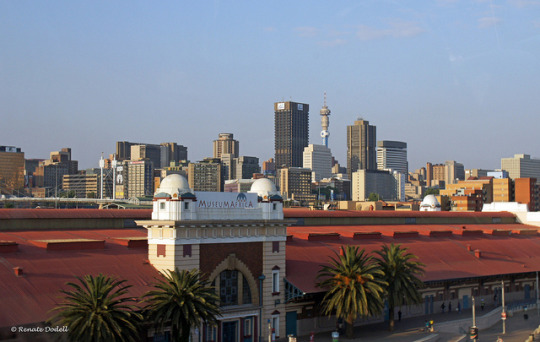
Image courtesy of Renate Dodell at Flickr.com
Some projects or ideas seem to be larger than life, but with crowdsurfing life was made easier by joining forces ad talents through the world-wide web. These collaborations could be either paid or unpaid for, depending on the cause. This has been a recent boom that has made quite an impact in countries of the third world. Many different projects and companies have taken on this collaborating workforce to enact ideas and turn them into working plans with the help of online communities. This strategy becomes sustainable while trying to put money in the hands of people with the best ideas who can actually use it to impact their lives and the lives of others. While helping economies grow and develop, it is transforming lives in communities few expecting big changes from.
Africa is a clear example of how crowdsourcing is affecting communities and helping them grow. The transformation in Africa has been evident and noted to be faster than anyone expected. A clear example of this is a platform that was created to track crisis or delicate situation such as: ethnic violence, earthquakes, and tsunamis. This platform plans on moving on to other projects such as monitoring the effectiveness of health care and educational services. This kind of project has attracted donors and people of interest to pay attention, as they start seeing the potential for other tracking and monitoring services in their core businesses.
Another famous example of crowdsourcing is Wikipedia, which relies on volunteers to write its articles. It now has over 20 million articles in English. This is a clear example of optimizing resources and utilizing the masses of individuals to solve larger problems.
Other movements like #TheAfricaTheMediaNeverShows is another clear example of people joining together for a cause. In this case it’s to improve Africa’s image in the world by showing the other side that’s never shown in the media, as the hashtag states. This movement has reached more than 40,000 tweets and continues to gain strength as the days pass.
This is also helping more people find jobs, when there was normally a lack of employment in their communities. By opening up sources of employment, more and more are finding where to put to use their knowledge, talents or expertise.
This trend continues to grow as access to technology and internet spreads across not only Africa, but the world. People look to crowdfunding or crowdsourcing as a way of finding solutions to problems that otherwise would seem overwhelming for just one community to take on.
Africa is leading the way in this trend and is doing so with four different strategies.
1. Crowdfunding:
Normally the sources for raising funds were directed through a specific groups of people or organizations, but now it’s directed to the world through an online platform. These platforms are spreading across Africa especially in the film and music industry and is now moving over to the business world as well.
2. Distributed work:
By creating a collaborative platform, they allow many people to work on one same project and share their expertise and knowledge. This has been one of the most popular models in Africa and has quickly put Africa in the eye of the world.
3. Distributed knowledge:
By sharing knowledge of experiences and situations that are occurring around the world in moments of crisis and political injustice, they have managed to create a platform that makes a change. It puts pressure on governments, creates awareness of crisis situations so that world organizations can donate and support people in need and brings people together to assure that people who need help get it.
4. Collaborative tools:
By collaborating on projects controlled by a manager these can save money and time. People’s expertise from around the world can contribute to different projects and this way help them along in a way that can affect communities and improve lives.
It is yet to be seen how the regulation for crowdsourcing or crowdfunding will be put in place. But this is something that will have to be worked out as time passes because it just seems to be getting stronger than ever, assuring that in the near future they will continue to operate and unite people all over the world regardless of this.
The potential for crowdsurfing and crowdfunding is limitless. Africa is a clear example of how ideas, talent, expertise, knowledge and price competitiveness can help a community grow and make ideas turn into reality. This innovative model will only continue to grow in Africa and its expected that it will be adopted in other places around the world. But Africa, right now is still leading the way and seems to always come up with new ideas that will for sure continue demonstrating their talented and innovative entrepreneurs.
0 notes
Text
5 Amazing Crowdfunded Energy Projects to Watch in Africa
Crowdfunding is a valuable fundraising tool for initiatives that make a significant impact on local communities. In general, groups and individuals present very specific projects on crowdfunding sites and receive donations from people worldwide who support the project’s goal. Crowdfunding is especially effective in underserved communities because it allows community members and nonprofits working on the ground to finance targeted solutions to everyday challenges.
For many communities across Africa, one of the main issues people struggle with is insufficient access to reliable and renewable energy. A lack of power in African communities can prevent people from enjoying healthy lives, obtaining an education, and securing economic opportunities. Around Africa, energy issues are being addressed by crowdfunded energy projects, including these five initiatives:
1. Energy for Zorgho
In Zorgho, Burkina Faso, erratic energy services were taking an especially large toll on the city’s limited medical facilities, especially an ophthalmic hospital, which experienced power outages and fluctuations that disrupted hospital operations and surgeries. Because it is the only hospital helping eye patients in the region, the doctors there treat 15,000 cataract patients every year, performing more than 1,500 cataract surgeries. Many of the patients travel great distances to receive treatment at the center.
To ensure that the ophthalmic hospital has the power it needs to treat patients, the nonprofits Africa Action and LIGHT FOR THE WORLD launched a crowdfunding initiative in 2014 to replace the hospital’s backup diesel engine with a photovoltaic (PV) system to supply solar power. The nonprofits raised nearly $3,000 on the betterplace.org crowdfunding platform and constructed a PV system with 8.1 kilowatts of power, which provided the hospital with a reliable and renewable energy source and cut its electricity costs by half. The hospital plans to use these savings to purchase new hospital equipment to better serve patients.
youtube
2. Solar Energy in Nigeria
Using the 1%Club crowdfunding site, a philanthropist successfully crowdfunded an energy project in Nigeria, where more than 100 million people have no access to electricity. Many Nigerians in cities and rural communities rely on kerosene lamps and other outdated devices for lighting, cooking, and heating purposes. However, kerosene lamps and open fires are associated with chronic health conditions, such as lung cancer, and the emissions from these items harm the environment.
Recognizing that clean, reliable energy is crucial for environmental conservation and economic development in Nigeria, the project organizer crowdfunded more than $4,000 to buy 12 solar panels for a village in Nigeria. The central solar-powered system generates light for about 200 to 500 homes, thus freeing families from dependence on hazardous kerosene lamps. By using solar power, the community also considerably reduced its carbon emissions.
3. Pedal Power Project
Because they lack access to electricity, people living in townships and rural communities in South Africa rely on kerosene lamps and candles that produce negative environmental and health outcomes. Instead of a solar power solution, Shakti Energy created an initiative on the Thundafund crowdfunding site to provide South Africans with modular LED lights that can be recharged using a pedal generator called the Nuru POWERCycle. The affordable and effective lights can provide up to 30 hours of light, giving a home about four hours of light for seven days.
youtube
In addition to lighting homes, the pedal power project helps develop energy entrepreneurs in low-income communities by giving locals a POWERCycle to recharge the LED lights. These energy entrepreneurs can earn a sustainable income, recharging five lights in just 20 minutes of pedaling.
Shakti Energy was able to raise almost $1,400 on Thundafund to start the project by providing an entrepreneur with the PowerCycle setup and enough lights to serve around 150 people in a township in South Africa.
4. Powering Education
Responding to the rising cost and decreasing availability of diesel in Tanzania, the Berlin chapter of Engineers Without Borders started a crowdfunding initiative to replace a diesel generator with solar power at the Baramba Girls Secondary School (BGSS) in Ngara, Tanzania. The school is home to 200 students, 11 teachers, and a number of other school personnel.
With reliable and cost-effective power, students will be able to study at night, teachers will enjoy better working conditions, and the school will able to regularly hold computer lessons. The solar equipment will also help the school cut its energy costs and free up funds for teachers’ salaries and school necessities.
So far, the project has raised more $50,000 on betterplace.org to cover three years of project expenses, from the initial research trip to installing the photovoltaic system.
5. Biogas Innovation Center
The Afrisol Foundation used the 1%Club site to crowdfund its biogas innovation center outside of Nairobi, Kenya. Biogas, a clean energy produced from waste, can be used to reduce energy costs, light homes for greater productivity, and cook with cleaner fuels to prevent respiratory illnesses. At the Afrisol innovation center, researchers develop and test new technologies that convert waste and organic residues into biogas. The center collaborates on biogas research with other institutions in Africa, including the Kenya Climate Innovation Center, the Agricultural University of Wageningen in the Netherlands, and the Strathmore Business School in Nairobi.
After crowdfunding more than $10,000 to start the center, the Afrisol Foundation made the center self-sustaining by establishing training courses and selling manure byproducts. The center also reinvests part of its profits to develop new services.
1 note
·
View note
Text
How Africa is reaching out to the masses
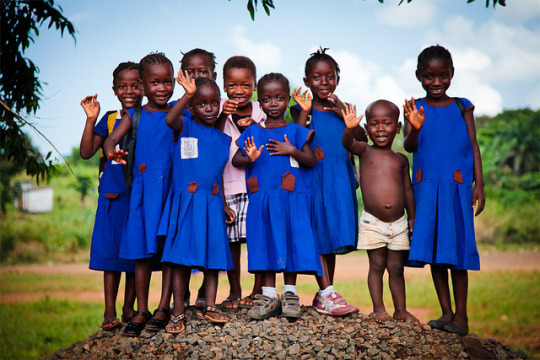
courtesy of bobthemagicdragon at flickr.com
What’s the first thing that pops into your mind when you think of Africa? Surely, answers will vary. For many it’s probably the long history of violence and poverty. For others, it might be diamonds. More often than not, our perception of the African continent is not a positive one. Africa is fighting to change how the world sees it, and one of the biggest opportunities to do this is through crowdsourcing.
Crowdsourcing, in basic terms, is getting a large amount of people to finance and initiative, project, or idea through an online collaborative effort mostly. It’s one of the greatest equalizers of the wealth gap in the world’s developing countries. It allows everyone to be a part of something potentially huge as well as allowing start-ups the chance at collecting funds to get going. Even though the concept of crowdsourcing is usually associated to raising capital, it can also be a great way to change people’s point of view. But, how can Africa use crowdfunding?
One of Africa’s hidden treasures is the human talent it has. Many bright minds and innovators have come from Africa but it was not easy. With the growth of social media and access to information, Africans now have a means to share their thoughts, ideas, innovations, or projects. However, obtaining funds is quite hard since Africa is usually not on everyone’s top of mind when it comes to possible investment ventures. Crowdsourcing has become of the most efficient and direct ways of overcoming this obstacle. You don’t pitch your idea to a room. Instead you allow the world to invest in your dream. This is of great importance to the progress of Africa. The African Crowdsourcing Association was designed with the aim of promoting crowdsourcing in the continent, making it an integral part in the continent’s growth. This is the first mayor step taken by Africa to adapt an online collaboration strategy which has had great success in America, Europe, and Asia. Depending on your interest, there are a number of crowdsourcing platforms for everyone.
JumpStart Africa: A crowdsourcing platform which is ideal for anyone looking to fund and audio-visual, fashion or publishing project. Those who think they have the next big idea in one of these sectors but are having trouble raising capital should definitely take a look.
StartSomeGoodAfrica: Do you have an idea to help a community? Start Some Good is an excellent place to start. Their main funding interests lie with those that want to change the world through social benefit projects.
M-Changa: If you’re looking to raise funds for a cause or an event this crowdfunding platform is a must. It offers backers a wide range of funding means to gather enough funds from all over the world. It’s especially adapted to today’s mobile world.
Thundafund: Although it is run out of South Africa, Thundafund is looking to help all African innovators and entrepreneurs fund and develop their ideas for the betterment of the continent. You can fund basically any kind of project, whether it be culinary, social, visual and performing arts, fashion, or any other.

Image courtesy of Allan Watt at Flickr.com
Crowdsourcing to better Africa
Raising funds is not the only use of crowdsourcing. Social awareness, health, and perception are all concepts that a collaborative effort can improve. Africa is using crowdsourcing to better the country.
The Africa the media never shows
Do you want to know the other side of Africa? The one filled with great landscapes, amazing tourist attractions, progress and the resilience of Africans is only a hash tag away #TheAfricaTheMediaNeverShows is how African youth is fighting to change how we all see the continent. It’s working. Africans and foreigners have made the campaign viral and are allowing to see an amazing side to Africa that we cannot find anywhere else.
Helping people in times of crisis
Social media has become a leading communication’s outlet when tragedy strikes. Ushahidi was developed to monitor the violent aftermath of Kenya’s 2008 election but it quickly became a platform to report on different events. From elections to natural disasters, Ushahidi is crowdsourcing at its best, allowing human rights groups for example to collect information on what is being posted to make sure government or the population to get out of line.
Africa is full amazing people who want more than anything to help their continent. Some have a novel idea, the latest hit, the design for the next fashion statement, or the desire to do good. All they are missing is the financial resource to see their dreams come true. Crowdsourcing will allow them to share their ideas for progress with the world and more importantly, gain the much needed economic backing to see them through. The world is changing and Africa is taking steps to make sure they are at the front of the change, rather than being left behind.
#crowdsourcing south africa#crowdfunding platforms south africa#Cecilia Ibru#africa economy#africa entrepreneurs
1 note
·
View note
Text
How 5 Valuable Initiatives Are Helping People in Africa
When people worldwide collaborate and combine their resources, progress and innovation ensue, which is evident on the Indiegogo crowdfunding platform. The site has enabled philanthropists and entrepreneurs to raise millions of dollars for a wide range of projects around the world, including initiatives in developing countries throughout Africa.
Through crowdfunding, nonprofits and individuals have the power to implement practical and localized solutions to prevalent issues in Africa, such as access to clean water and education. These projects are often designed to be self-sustaining and to promote long-term progress in African communities. While there are hundreds of crowdfunded projects operating in Africa, here are five successful campaigns recently funded on the Indiegogo platform:
1. Solar Tech
An international nonprofit called the INTASAVE-CARIBSAVE Group uses Indiegogo to crowdfund its Solar Nano-Grids (SONGs) project, which strives to deliver solar power and business opportunities to rural African communities. The nonprofit partners with locals in Africa to develop solar hubs, maintain the equipment, and establish micro-businesses. With $20,000, the SONGs project can install a solar nano-grid that supplies power to as many as 60 families. The crowdfunding campaign established a fundraising goal of $100,000 to directly improve the quality of life of 1,500 people in Kenya’s Lemolo B community.
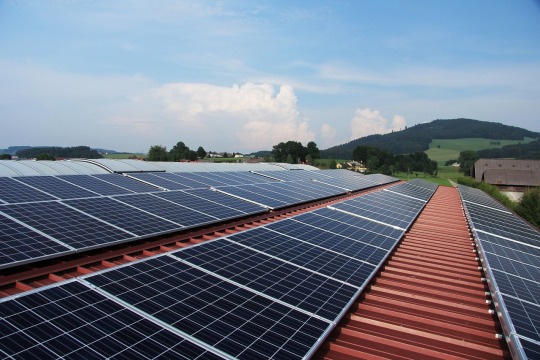
In just one month, the SONGS project surpassed its fundraising goal and raised more than $101,000 on Indiegogo. The solar power project will help reduce poverty, create sustainable livelihoods, and increase access to basic services in Lemolo B.
2. ARA
Ara, or the African Bone Marrow Donor Recruitment Program, works to fight sickle cell anemia and blood cancer in Africa by promoting cancer awareness and identifying bone marrow donors. By December 2018, Ara hopes to add 30,000 bone marrow donors to the flagging bone marrow registries in Africa. Ara launched its first campaign at the end of 2015 to recruit 2,000 donors in Lagos, Nigeria.
After setting a fundraising goal of $7,500 for the first campaign, Ara raised more than $7,700 on Indiegogo for educational materials, IT solutions, and donor drive expenses. The campaign is intended to create a supportive community for patients with cancer and sickle cell anemia, while also eliminating the stigma tied to blood donation and cancer in many African communities.
In order to realize long-term improvements for these patients, Ara will hold bone marrow drives three to four times a year and help to develop donation and cord blood storage facilities across Africa. The project will also facilitate international accreditation for HLA typing labs in Africa to expedite the typing and registry development process.
3. Clean Water Campaign
On behalf of the nonprofit Innovation: Africa, students at MIT started an Indiegogo campaign to raise funds for a clean water system in Malawi. The students focused the campaign on the Kaputalambwe village, where a recent outbreak of waterborne illnesses and malaria sent 50 patients to the hospital each day for a month.

In addition to seeking support on Indiegogo, the students set up a pie-smashing challenge on the MIT campus to raise awareness and donations. Students, campus leaders, and administrators agreed to receive a pie in the face for a donation from the highest bidder. The campaign exceeded its initial fundraising goal of $30,000 in two months, which allowed Innovation Africa to install a sustainable clean water pump in Kaputalambwe.
If the campaign can meet its next fundraising goal of $90,000, Innovation Africa will be able to expand the pump capacity and implement a maintenance system so that more people have access to clean water for a longer period of time. The additional funds would also finance a drip irrigation system for increased food production and more sustainable livelihoods.
4. Education in Tanzania
For students at the CHETI 4 school in the rural Murieti Village of Arusha, Tanzania, it was difficult to focus on learning in a deteriorating school house without a food program. Most people in Arusha survive on just one dollar a day, which makes it difficult to afford school fees. At CHETI 4, the school director lowered tuition costs to increase enrollment, but the incoming funds don’t cover the cost of a school food program or a new building.
The nonprofit Mom2Mom Africa addressed these issues with a campaign on Indiegogo that successfully raised more than $21,000. The funds covered a new three-classroom school building, school supplies, a kitchen, and a food program for 100 students. With a well-equipped classroom and full stomachs, students at CHETI 4 no longer leave early and enjoy a higher-quality education.
5. The Power Soap Project
Through The Power Soap project, the Living GREEN Foundation helps women in Nairobi, Kenya, to establish micro-businesses that make and sell soap, which also promotes handwashing habits that reduce deadly diarrheal disease. According to the International Initiative for Impact Evaluation, washing your hands with soap can decrease diarrhea by more than 40 percent. Self-sufficient women who operate a soap business also help to improve the quality of life and reduce poverty in Nairobi communities with low incomes.
youtube
By raising almost $3,500 on Indiegogo, the Living GREEN Foundation was able to train women how to operate a successful soap business and promote handwashing. The funding also supported a Power Soap promotional campaign to distribute soap samples and drive community interest.
0 notes
Text
The African technology hub has a new voice and it is pretty amazing
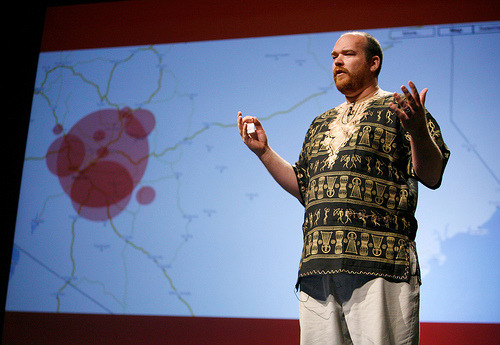
Image contribution: Photo courtesy of Pop!Tech 2008 – Erik Hersman at flickr.com
Kenia is holding one of the most intense innovation heartbeats of the African continent. Nairobi is, without a doubt one of the focal points for the development of new technologies with a social spirit and Ushahidi is in the center of this phenomenon. Ushahidi is a crowdsourcing platform that was born in eastern Africa and is being used by civil society groups, just like iHub one of the best technological innovation spaces there are, a real continent role model.
Erik Hersman is one of the members of the selected driving forces for initiatives like the ones mentioned before. African tech ecosystem is small enough for some characters to stand out and act as sponsors to other initiatives but also, big and rich enough to create transforming innovations. Hersman explains it in a very illustrative manner, for him Africa has been consuming technologies created by everybody else, know, the continent counts on skills good enough to create the tools that best adapt tp their needs. They have created these innovations to cover African needs and know their work is being exported to different parts of the world and becoming global.

Image contribution: Photo courtesy of Erik Hersman - PopTech 2013 - Camden, ME at flickr.com
Added to that long list of tech innovative ideas are financial systems like mobile money from MPesa, that from Africa has extended to several developing countries around the world, there are also platforms were civil society groups participate like Ushahidi that from Kenia have been used in other parts of the globe as well as the BRCK, a hard drive and modem created to function in places with harsh environmental conditions like extreme heat, humidity and/or dust. The list of creative thinking people with great ideas in Africa is completed with other innovations more of everyday life hacks, these innovations show that the goal of looking for African solutions to the problems hasn’t been enough to cover most of African and global needs.
Hersman presence is absolute and amazing, corpulent, with a shaved head, a bushy read haired beard a deep penetrating voice and a very white skin tone is a tech expert with a special skill to go through the world showing it that Africa’s talent and tech potential is great and worth investing in whilst at the same time is the head of Kenia’s most innovative and cutting edge initiatives. He knows that the way he looks doesn’t fit much with African population but that won’t stop him, his identity is in every social network available including a blog in which he first started his tech adventures.
He recognizes that he has always been interested in mobile and web technologies, but it was Kenia’s post electoral violence what made him look for the social benefit of technology. It was that concern and extraordinary consciousness along with other bloggers that gave life to Ushahidi, then iHub, then BRCK and so on, this story started seven years ago and it has only been growing since then.
For this Kenyan man with a big heart for social benefit, creativity and collaborative work, the most important thing for entrepreneurship is useful innovation, they have proven with Ushahidi that technology could be an answer, this tool can be used for a lot of different situations but the most important one is social benefit. He states that making money is not a hard thing to do but the important question to ask is if you are doing that in a beneficial or harmful, him and his team realized that what they were doing was impacting the world and it was at the same time creating a community that at the same time was creating a lot more.
Even though this impact has been so forceful, Hersman speaks with modesty about his work in collaborative groups and the role the community plays in making everything possible. When he speaks about the digital world, the world of technology, he states that it is easy to find collaborative projects for everything because there is, even in Africa, a big belief that if you want to go fast go by yourself and if you want to far go together, he believes that in more advanced continents like America or Europe they like to go faster.
Hersman picks out from the African Tech Lab in Nigeria, Uganda, Senegal and Zambia a lot of qualities and different characteristics, some of them have a lot of members and some of them are small communities, some have an entrepreneurial focus and others a more social one, some of them are related to university studies and others with civil society organizations. Each one of them needs a different model depending on their orientation but that doesn’t stop them from bonding with each other and along the way this tech lover doesn’t believe that Berlin or Philadelphia’s experiences haven’t also been connected to the Kenyan iHub.
0 notes
Text
Solving the Top Problems in Africa with Crowdfunding
People around the world use crowdfunding to finance and expand a wide range of projects. In developing regions, such as Africa, crowdfunded initiatives often lead to the implementation of solutions and foster positive change on a local level. With support from the public, these projects can address major challenges, including education, entrepreneurship, and environmental conservation. Here are just five of the crowdfunded initiatives solving some of the top issues in Africa:
1. Poster Art Project
In 2011, a group of people from the creative field started the 50/50 project in response to UNICEF reports of food shortages across East Africa. UNICEF said that more than 13 million people in the region needed aid and reported that at least 320,000 children were faced with life-threatening food shortages. To support UNICEF’s famine relief efforts in East Africa, the social innovation groups Made by Many and Good for Nothing challenged artists to create a fundraising project every day for 50 days in hopes of raising more than $1 million.
youtube
One of the projects submitted for the 50/50 initiative was a poster series called Posterity, which raises funds through the sale of $50 limited-edition posters that subtly and powerfully refer to the food crisis in East Africa. Launched by The Mill, a visual effects agency, the poster series includes pieces by a range of artists with distinct approaches to raising awareness and funds for food crisis relief. For example, artist Chris McKenzie created a poster with an algorithm-generated map of Africa made from data on its streams and rivers.
2. Enko Education Investments
On the Homestrings crowdfunding site, Enko Education Investments (EEI) is seeking investors who want to help the management and investment company implement high-quality and affordable academic opportunities in Sub-Saharan Africa. EEI is currently establishing one the region’s most extensive networks of private schools to ensure that more students from Sub-Saharan Africa can qualify to attend top universities in the world. To realize this goal, EEI is working with high-potential private schools that already operate in the region and offering an International Baccalaureate curriculum to students at an affordable price.
EEI has already implemented the IB curriculum at two schools, where students have access to high-tech classrooms, a three-year English program, and specially trained educators. When students graduate from the IB program, they receive an IB diploma that is recognized by more than 2,000 universities in 75 countries.
3. Mangroves in Madagascar
Recently, Republic of Change launched a crowdfunding campaign on the Indiegogo platform to raise funds to plant trees in Madagascar. The campaign committed to planting one tree for every dollar donated. According to the Republic of Change, major organizations like NASA and the UN agree that trees are the most effective way to absorb carbon dioxide in the atmosphere and slow down climate change. However, trees are being cut down at a staggering rate of 72,000 soccer fields of forest each day.
Republic of Change is addressing deforestation and carbon dioxide levels by planting mangroves, primarily because they can absorb 400 percent more carbon dioxide than deciduous trees. Mangroves also promote biodiversity and have one of the highest survival rates among all trees. By planting in Madagascar, Republic of Change is creating jobs for people in communities with high poverty rates, and the region’s proximity to the equator helps the trees absorb more carbon dioxide.
youtube
Through a $25 donation, Republic of Change can plant 25 mangroves in Madagascar, which absorbs .6 tons of carbon dioxide, equivalent to six weeks of driving and three weeks of home power. The crowdfunding campaign also offered supporters enticing donor perks, including a limited-edition T-shirt, canteen, and free travel nights.
4. Women's Initiative for Education & Empowerment
Founded by Global Unification - The Gambia (GU) in 2011, the Women's Initiative for Education & Empowerment (WIFE) works to lower poverty levels and empower women through entrepreneurship. GU launched a second round of crowdfunding on the 1% Club site in 2014 to expand its pilot program in the Dongoroba Village of The Gambia, where GU had trained 300 women in climate-smart agriculture and helped them develop an income-generating community garden.
During the 2014 crowdfunding campaign, GU exceeded its fundraising goal and received more than $7,000 to finance the second phase of WIFE in Dongoroba Village. The second phase of WIFE focused on building a produce storage room with solar-powered air conditioners so that women in Dongoroba can store vegetables and sell them for higher prices. Along with the storage room, phase two of WIFE supplied gardening tools, vegetable preservation classes, and the Dongoroba Women Farmers Association. GU explains that the garden project helps to eliminate poverty and reduce violence against women in The Gambia.
5. Clean Water Campaign
In order to reduce rates of diarrhea caused by polluted water in Senegal’s Potou region, the Millennium Villages Project (MVP) began as a crowdfunding campaign for a water quality solution. MVP created the campaign after finding that sanitation and water-related diarrhea was the second leading cause of death among children under 5 in the community.
By successfully crowdfunding the clean water campaign, MVP purchased a portable water quality monitoring kit for Potou, allowing the community to identify water pollution sites and address the problem through infrastructure improvements and sanitation education.
0 notes
Text
7 Educational Initiatives in Africa Supported by Crowdfunding
Through crowdfunding platforms, individuals, groups, and nonprofits can secure financial support from the public for initiatives that benefit entire communities. Crowdfunded initiatives have been particularly useful in developing parts of Africa, where there are a wide range of social challenges, from clean water shortages to a lack of medical services.
Another major social challenge in African countries is access to quality education. To advance education in Africa, people around the world have created crowdfunding campaigns for a variety of initiatives. The following is a quick look at seven of these initiatives.
1. New Building for the Satara School in Burkina Faso
In Ouagadougou, the capital of Burkina Faso, the Satara School has been providing local families with a quality education and employment opportunities for 20 years. However, the small school building was unable to accommodate all of the students in the community, and the school eventually had to leave its longtime premises when the rent became too high.
After leaving its original location, the Satara School bought 2.8 acres of land from the government to build a new school with plenty of space for all the children in the community. The school turned to the 1%Club crowdfunding platform to raise the funds needed to construct the new complex. With support from the public, the Satara School raised more than $16,000, which it will use to build a kindergarten, primary school, computer room, cafeteria, and recreation field. The school hopes to accommodate around 600 students and 30 teachers.
youtube
2. Bright Start’s Community Workshop Program
The nonprofit Bright Start maintains a Community Workshop program in Hout Bay, Cape Town, to help adults and youth in under-resourced communities. The educational workshops cover a wide range of relevant topics, such as entrepreneurship, parenting, health issues, and budgeting. Primarily working with people from the low-income communities of Hangberg and Imizamo Yethu, Bright Start conducts the workshops to help educate and empower people who would otherwise lack access to educational opportunities.
Using the Thundafund crowdfunding platform, Bright Start is crowdfunding additional workshops and more youth-oriented workshops. The youth workshops also focus on issues such as substance abuse and violence prevention.
youtube
3. The Bhongolethu Foundation’s Educare Project
On Thundafund, the Bhongolethu Foundation has been raising money to support a learning center in Masiphumelele, Cape Town, which is in the Western Cape region of South Africa. Through an early childhood development (ECD) program, the Bhongolethu Foundation strives to enable students to contribute to South Africa’s work force and economic growth as healthy and productive citizens.
So far, the nonprofit has raised nearly $4,000 to open its first Educare center. At the center, the Bhongolethu Foundation will work with 30 children, and the donated funds will cover the cost of the students’ supplies for a full year. Additional funds raised will be used to provide two healthy meals for each student every day, and ultimately, cover the school’s operating costs for a year.
youtube
4. YEP for Africa’s Student Mentorship Program
In 2013, YEP for Africa launched a crowdfunding campaign to raise funds for a student mentorship program in South Africa. The program focuses on helping students value their education, set goals for the future, and learn job skills.
By raising more than $3,000 on the 1%Club site, YEP for Africa was able to collaborate with local high schools to establish mentorship programs. The program works with six 10-person groups per semester, and mentors maintain contact with students over the course of three months to ensure they are working toward their goals.
youtube
5. Project Cecilia's Children
Project Cecilia's Children was founded by a Kisumu, Kenya, resident named Daniel, who was left with few resources after his mother, Cecilia, passed away when he was a teenager. Only with the help of his community was Daniel able to attend school and become independent.
Cecilia's Children is now working to build a tuition-free school in northwest Kisumu so that other children without parents or financial resources can access academic opportunities and break the cycle of poverty. Construction has commenced with funds raised on the Betterplace crowdfunding platform.

6. Food Garden at South African Primary School
Recognizing the connection between academic success and proper nutrition, the nonprofit EduPeg partnered with Urban Harvest on a crowdfunding initiative to establish a sustainable food garden at Litha Primary School in Gugulethu, South Africa. The garden was created to provide students with a healthy meal at school so they can stay alert and attentive throughout the day.
After raising more than $4,700 on Thundafund, the organizations were able to develop an expansive garden that can feed at least 400 students each day. The garden also generates a source of income for community members who maintain the garden and sell the surplus produce.
7. New Buildings for Havilah Academy in Ghana
Started as a tuition-free school in 1999, the Havilah Academy is dedicated to providing a quality education to students in Gomoa-Ojobi, Ghana. The school recently had to implement a small tuition fee to cover administrative expenses, but the fees weren’t high enough to pay for necessary repairs to the school’s buildings. According to the school, termite damage and other issues made the 12-year-old structures a safety hazard for the students and teachers. On the Betterplace crowdfunding site, the Havilah Academy has been able to raise enough money to purchase materials and begin rebuilding.
#Havilah Academy#South African Primary School#Cecilia's Children#YEP for Africa#Bhongolethu Foundation#Bright Start#Thundafund#Satara School
0 notes
Text
Progress Powered by 3 Crowdsourcing Projects in Africa
When people live in remote communities or towns that lack functional infrastructure, it can be difficult to realize progress and positive change. Crowdsourcing apps and mobile technology are becoming increasingly popular tools in driving solutions in these communities, where health care, education, and other systems are often hampered by pervasive problems.
In a number of countries in Africa, cell phone use is widespread, making mobile-based crowdsourcing an effective way to connect people in rural African communities with resources and information. Continue reading to learn more about how people and communities in Africa are benefiting from three crowdsourcing platforms.
1. Tell-it-True
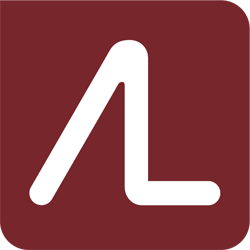
Education is typically regarded as one of the main ways people can break the cycle of poverty and improve their lives, but in Liberia, corruption has compromised that opportunity in some areas. Instead of imparting knowledge and encouraging civic responsibility, many schools in Liberia promote corruption, resource abuse, and sexual harassment. The Accountability Lab, an anti-corruption nonprofit, also reports that “a culture of silence” has prevented students and teachers from speaking out for change. The silence has continued because students worry about academic repercussions and teachers lack support, while both groups mistrust administrator-run feedback tools.
To overcome the culture of silence, a Liberian student working with the Accountability Lab started Tell-it-True, a crowdsourcing app that operates as an anonymous, confidential SMS feedback box. The system sends a free code to students, administrators, and teachers at schools in the capital city of Monrovia, allowing users to report problems by sending confidential text messages. Within 24 hours, an operator will contact the individual to gather more information and provide possible solutions.
Information shared through the crowdsourcing system is also reviewed periodically by school groups, including parent teacher associations and student government organizations, who collaboratively develop relevant action plans. When a plan is finalized, the whole student body attends a meeting to learn about the process and the action plan. The Tell-it-True platform is helping to increase accountability and foster positive change at numerous schools in Monrovia.
2. iCow
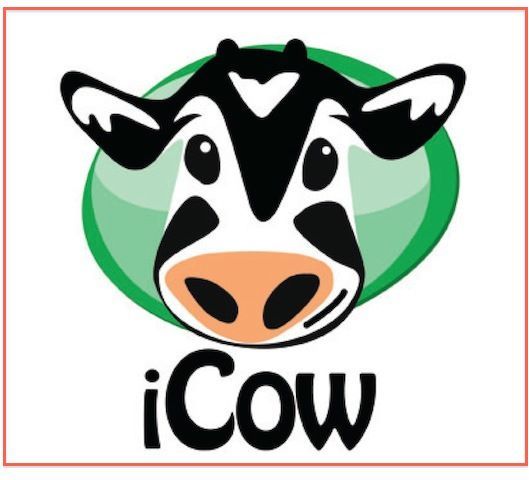
While it has traditionally been difficult to help smallholder farmers in Kenya learn about and embrace new farming methods, mobile technology and crowdsourcing apps are bridging the gap between rural farmers and valuable information. The iCow mobile phone application is one of the many crowdsourcing tools helping farmers in Kenya to better manage their livestock and lands.
According to iCow, Kenya’s dairy industry comprises more than 1.5 million farmers who primarily operate small farms and usually sell little more than three to five liters of milk each day. To generate enough income to rise above the poverty line, these farmers need to sell around 15 liters per day. Dairy farmers can maximize their cows’ milk production and breeding potential by properly managing and tracking their lifecycles, including the fertility cycle and estrus cycle.
youtube
iCow features a comprehensive gestation calendar, a milk record tracking sheet, and an immunization calendar. With iCow, farmers can also receive information about proper veterinary care and nutrition. The app allows farmers to enter specific information for each cow, and the service sends the farmers text messages and voice directives with custom instructions related to production and breeding patterns. Famers receive the prompts over the course of the cow’s year-long cycle, which helps them reduce risk and make informed choices. For many farmers in Kenya, iCow is the only way for them to receive information about effective animal management and farming techniques.
One dairy farmer in Kenya started using the app in 2011 and realized significant yield increases. For example, one of his cows that used to yield around 15 liters of milk at most now produces more than 30. He credits the increased milk production and better health of his animals to the information and tools he accessed on iCow. On the app, he learned about animal hygiene, fodder production, and disease prevention. He also improved his business acumen by learning how to assess the per-liter cost of milk production.
3. Laikipia Unity Program
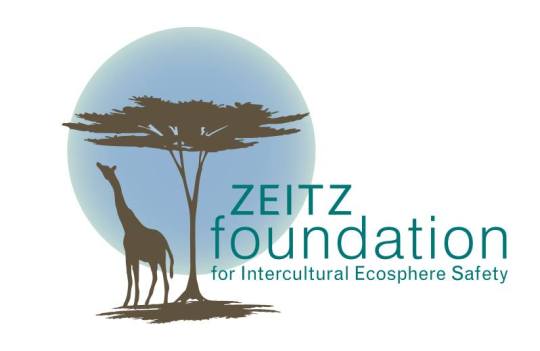
For a number of years, the Zeitz Foundation has maintained the Laikipia Unity Program in Laikipia County, Kenya, to promote unity and environmental stewardship through sports. After hosting a successful environmental education program and regional football tournament that united once-violent rivals, the initiative had to find a way to sustain enthusiasm for unity and conservation in an area with 500,000 people and just 50 miles of paved roads.
The Laikipia Unity Program partnered with FrontlineSMS to implement a cost-effective and efficient mobile communication system for a region in which everyone, from urban residents to nomadic shepherds, has a cell phone. Using FrontlineSMS, the initiative issued a survey on regional environmental challenges to football team members who had registered their cell phones. The responses allowed the Laikipia Unity Program to customize messages and conservation activities for each community.
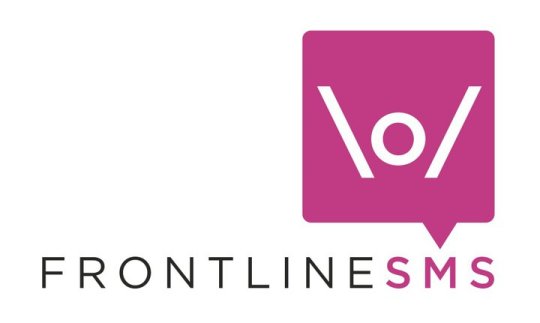
With the mobile platform, the initiative can gather and share a wide range of information, such as football match reports, match feedback from players and spectators, and game statistics. The initiative also uses the crowdsourcing platform to organize and publicize its conservation events, including community cleanup events and environmental education theater shows.
#crowdsourcing#africa#frontlinesms#Zeitz Foundation#Laikipia Unity Program#iCow#Tell-it-True#Accountability Lab#crowdsourcing south africa#crowdsourcing websites south africa#crowdfunding platforms south africa#crowdsourcing in africa
0 notes
Text
5 Crowdfunded Projects Promoting Health in Africa

Communities across Africa are still working to establish consistently funded, stable health systems. Because this task is not yet complete, many people continue to lack access to both basic and advanced medical services, and commonplace health issues, ranging from pregnancy to mental health concerns, often go unattended and evolve into life-threatening conditions.
Crowdfunding enables organizations and individuals to improve health outcomes in Africa by leveraging smaller donations to fund important projects. The following are only a few of the crowdfunded projects promoting better healthcare in Africa:
1. One Cushion, One Life Project
The Uhambo Foundation successfully raised more than $3,500 on the 1%Club crowdfunding site to help people with disabilities in Bulawayo, Zimbabwe. According to the Uhambo Foundation, a wheelchair can help improve the quality of life for people with disabilities, but more than 50 million of the people using wheelchairs in under-resourced communities need supplementary support products at an additional cost to avert secondary health conditions.
The Uhambo Foundation’s One Cushion, One Life project was developed to help wheelchair users in Bulawayo, Zimbabwe gain access to special cushions that help prevent life-threatening pressure sores. Along with the cushions, the project paid for training for 15 local medical providers on how to properly care for people in wheelchairs. The campaign advanced the physical and social health of at least 60 wheelchair users.
2. OneDollarGlasses
Through the Betterplace platform, the organization Enactus Munich raised funds from over 150 donors worldwide in support of its OneDollarGlasses initiative, which provides low-cost corrective lenses to those who lack access to vision care. OneDollarGlasses, developed by Martin Aufmuth, are eyeglasses that can be produced for less than a dollar in material costs using a bending machine, polycarbonate lenses, and spring steel wire. In 2015, Enactus’ crowdfunding campaign supported training in Burkina Faso in West Africa.

3. Mental Health Clinics
In Kenya, the founder of a free mental health helpline used the 1%Club site to raise funds to establish mental health clinics at medical facilities around the country. The project organizer started the campaign after helpline users requested regular and in-person support groups that foster discussion and a sense of community.
After raising more than $4,500, the project was able to create 20 “chill out” centers in major towns in Kenya. The campaign also funded training for the volunteers and staff members responsible for overseeing the mental health centers.
4. School Sanitation Project
Thousands of children around the world die every day from diarrheal disease. In fact, according to the World Health Organization, diarrheal disease is the second-most common cause of death in children under the age of 5. However, in many cases, diarrheal disease can be prevented if people have access to proper sanitation facilities.
The group Engineers Without Borders recently launched a crowdfunding project to help deter diarrheal disease in the Amathole District in South Africa, where just half of the population has access to toilets. With funds raised on the Betterplace crowdfunding site, Engineers without Borders will construct proper sanitation systems at Crabbush Primary School in Hogsback and remove hazardous pit latrines that lead to groundwater contamination. To further promote community health, the project will fund workshops that teach school staff how to encourage safe and hygienic behaviors.
Engineers Without Borders will partner with local organizations to build the toilets and operate wastewater treatment systems. In addition to preventing water contamination and diarrheal disease, the project will provide jobs for locals in an area with a high unemployment rate. Moreover, young people who work on the project will receive valuable training on sanitation system construction, which could improve their future employability.
5. The Village Ambulance Project
For many people in rural communities around Africa, distant medical facilities and a lack of transportation result in limited access to health care. The Ugandan nonprofit Good Shepard Care Ministries founded a crowdfunding project to address this issue in Kameke, a rural community in the Pallisa district of eastern Uganda.
By raising more than $1,000 on 1%Club crowdfunding site, the organization was able to purchase a village ambulance that can transport Kameke residents to the hospital in Pallisa. The ambulance is a custom-built carrier with a foam mattress and a weatherproof canopy. Designed to safely convey people over Uganda’s rough roadways, the ambulance can be moved by hand, or be pulled behind a bike or motorized vehicle. Kameke’s village ambulance is useful in a wide range of circumstances. For example, it can transport women who are in labor, move elderly residents to treatment centers, and rush children to the hospital after an injury.
0 notes
Text
4 Crowdfunding Sites Powering Improvement Projects in Africa

Through crowdfunding platforms, people around the world can introduce and support a wide range of projects, including initiatives that drive medical, economic, and social improvements. These platforms also offer a variety of fundraising tools to help innovators and philanthropists organize campaigns and attract donors. They even allow people to donate to specific causes that they find personally meaningful. On many platforms, donors can learn about the individuals they are helping and track the progress of a project.
Crowdfunding is especially vital for organizations working in developing countries, such as those in Africa, where traditional sources of financing are scarce. The following are only a few of the many crowdfunding sites supporting improvement initiatives in the region:
1. Betterplace
As one of the most sizeable online donation platforms in Germany, Betterplace hosts a significant number of social projects dedicated to driving change in Africa. Launched in 2007, the platform was inspired by the work of innovators worldwide who were striving to develop solutions to social challenges but lacked the necessary resources and support. Betterplace helps those innovators connect with a global audience so they can develop their ideas and improve lives.
The platform has grown into a major crowdfunding site by emphasizing engagement, efficiency, and impact. To facilitate the success of projects, Betterplace offers online fundraising tutorials and conducts research on digital trends regarding charitable initiatives. It also allows donors to query project organizers, observe the impact of their donation, and rate projects.
To date, Betterplace has helped raise well over $1 million for projects that address various challenges in Africa, such as education and access to clean drinking water. In addition to soliciting donations, Betterplace showcases projects that offer volunteer opportunities, both online and in the field.
2. 1%Club
The Amsterdam-based 1%Club promotes the idea that anyone is capable of generating positive change one project at a time. Thus far, the crowdfunding platform has raised more than $2 million to help launch over 800 projects in nearly 80 countries, including the African nations of Ghana, Burundi, and Uganda.
Recently, the platform enabled a project organizer to finance education for children in need outside the capital of Uganda. The organizer raised more than $4,000 through the 1%Club site to build 10 greenhouses. The community will use the greenhouses to produce a surplice of food and a sustainable source of income that will allow more than 1,000 children to receive an education over the course of five years.
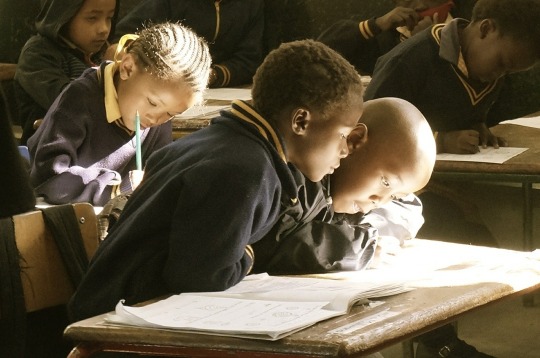
3. CauseVox
An online crowdfunding platform focused on doing good works, CauseVox strives to create a better world by publicizing a variety of projects, including initiatives that promote financial security and improved health outcomes in Africa. The platform also provides online fundraising tools that allow users to effectively scale their social impact. Since its founding, CauseVox has helped individuals, international nonprofits, and groups of people united by a shared goal crowdfund millions of dollars.
In many cases, humanitarians and nonprofits use CauseVox to crowdfund a specific campaign in Africa. The World Help organization, for example, successfully used CauseVox to raise money to deliver 5 million meals to those impacted by drought in Ethiopia, Kenya, and Somali. Similarly, a nonprofit called Development in Gardening (DIG) is raising funds through CauseVox to expand its sustainable agriculture work to improve food security, nutrition, and economic stability for thousands of African families.
4. Samahope
On the Samahope crowdfunding site, donors can support positive change in Africa by funding surgical procedures performed by local medical providers. With over 2 billion people across the world currently lacking access to surgical care, Samahope’s work helps ensure that people with limited financial resources receive the treatment they need. On the Samahope platform, users can provide necessary resources for providers, who are often under-budgeted, overloaded, and under-equipped. The platform boasts more than 3,000 donors and has funded procedures for over 6,000 patients.
The platform partners with providers in numerous countries in Africa, including Sierra Leone, Mali, and Uganda. In Somaliland, donors can help the few female doctors in the country complete after-birth repair surgeries, or fund surgeries for burn victims in Zambia. Samahope only partners with medical providers who are known for generating positive patient outcomes and demonstrating fiscal responsibility.
0 notes
Text
3 Crowdsourcing Projects That Are Making a Difference in Africa
Cell phone use, especially the use of texting, has significantly increased over the last decade in numerous African countries, including Ghana, Uganda, Tanzania, and Kenya. In fact, cell phone penetration is currently as high in Nigeria and South Africa as it is in the United States, according to surveys by the Pew Research Center. Alongside the growing presence of this mobile technology, African crowdsourcing platforms have flourished, allowing people around the world to share, collect, and leverage information to create change and empower wide range of people, such as farmers and new mothers, in areas that lack vital resources and support systems.
The following three crowdsourcing projects are working to create social and economic improvements in Africa:
1. Totohealth
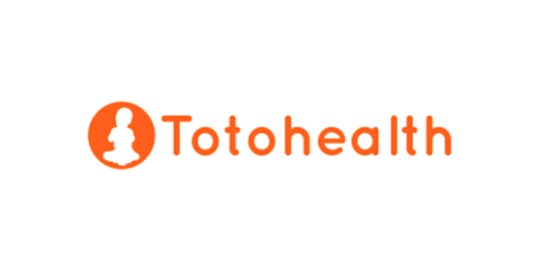
When mothers give birth in Kenya, almost 50 percent do so outside of a hospital, which means that they receive minimal care from medical professionals and limited parenting education. Many women in developing communities don’t have access to accurate information about how to handle maternal health issues, how long to breast feed, or where to go for help if they experience a medical emergency.
Launched in 2014, the crowdsourcing platform Totohealth uses SMS technology to help parents in Kenya and other developing areas navigate the challenges associated with raising young children. Among other services, they help mothers and fathers detect developmental abnormalities.
Based on a child’s date of birth, Totohealth sends parents personalized messages with information on upcoming developmental milestones, reproductive health, nutrition, and appropriate developmental stimulation. Along with weekly text messages, parents have access to a help-desk feature that allows them to ask questions about health concerns or other matters. Totohealth’s staff of health care providers responds to inquiries, including life-threatening issues, within minutes at any time of day.
Dedicated to reducing maternal and child mortality rates in Africa, the crowdsourcing service is especially useful in areas where many families have basic mobile phones but very little access to healthcare. Totohealth users can sign up for the service for free, and the monthly fee of 25 cents per person is paid by county governments in support of community health improvements.
2. WeFarm
According to the crowdsourcing platform WeFarm, the majority of the 500 million smallholder farmers around the world live on under a $1 per day, despite producing much of the world’s food. WeFarm explains that small-scale farmers in Africa and other developing regions are more affected by climate changes and often lack access to financing, traditional markets, and agricultural information. Although these farmers regularly create affordable and innovative solutions to daily challenges, it was often difficult for them to share knowledge because many live in remote communities without an Internet connection.

image courtesy Wikipedia
With WeFarm, rural farmers in Africa can share information through texting, without having to leave their crops or use the Internet. The free peer-to-peer application allows farmers to easily ask questions and obtain crowdsourced answers from other experienced farmers worldwide in a matter of minutes.
Operating in Kenya and Peru, WeFarm boasted 25,000 users by late 2015. Farmers using the platform have exchanged more than 100,000 ideas on a wide range of topics, including feeding cows, treating sick chickens, and spacing cabbages.
3. Saving Lives at Birth
Founded in 2011, the Saving Lives at Birth campaign invited innovators worldwide to develop and propose new prevention and treatment methods to help newborns and pregnant women in remote communities. The crowdsourcing campaign was launched in response to startling maternal and infant mortality statistics, including the finding that women are almost 140 times more likely to die in childbirth in sub-Saharan Africa than in developed nations. Saving Lives at Birth was created and funded through a partnership between the UK Department for International Development, the Bill and Melinda Gates Foundation, USAID, Grand Challenges Canada, the Korea International Cooperation Agency, and the Government of Norway.
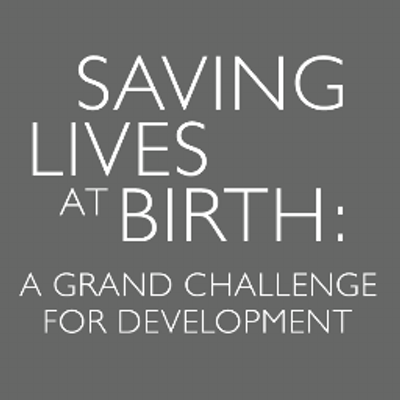
In response to its call for innovations to reduce maternal and neonatal deaths, the Saving Lives at Birth project received thousands of applications over the course of five years. The most promising solutions were awarded seed funds and transition grants to enable the innovators to create life-saving medical devices for healthcare centers in low-income communities.
Many of the innovations funded by the Saving Lives at Birth campaign capitalized on mobile phone technology. For example, the Inclen Trust International from India successfully presented an idea for a mobile device that monitors women and fetuses in the later stages of pregnancy and during labor. While this monitoring process typically requires expensive equipment, Inclen Trust developed a more affordable system, called the mobile health (mHealth) device, which operates through a mobile phone. The crowdsourcing project also funded a clip-on device that allows smartphones to act as a heat sensor to diagnose pneumonia in children.
0 notes